
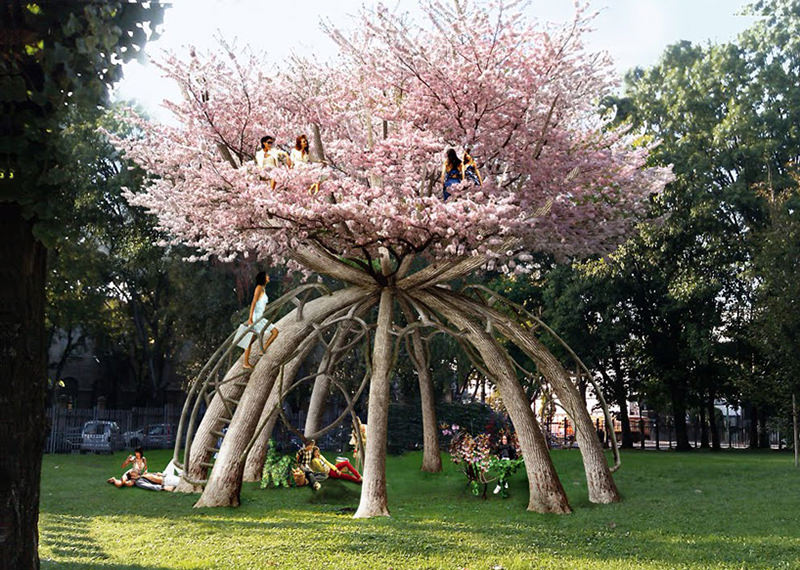
visiondivision
Trees, vines, and shrubs are focal points in any garden, but most backyard orchardists aren’t blessed with enough acreage to match their ambitions. It’s a constant fight to cram all those spectacular specimens spotted in the nursery into increasingly crowded plots, and to do it beautifully. The only solution to this conundrum is to efficiently use the only space remaining: Get ready to go vertical—and sculptural!
While art forms like topiary and bonsai are established ways of making living sculptures of ornamentals, there is also a world of possibilities in making fruiting plants into Axel Erlandson-esque works of art. It’s the perfect marriage of form and function.
The Patient Gardener (pictured above), a proposed two-story living retreat made of cherry trees designed by the Swedish architectural team at visiondivision, is at the extreme end of fruit tree sculpting. Their project is projected to reach, ahem, “fruition” six decades from now. For the hobby orchardist on a shorter timeline, here are some simpler forms a living fruit tree sculpture can take.
Edible Hedgerows
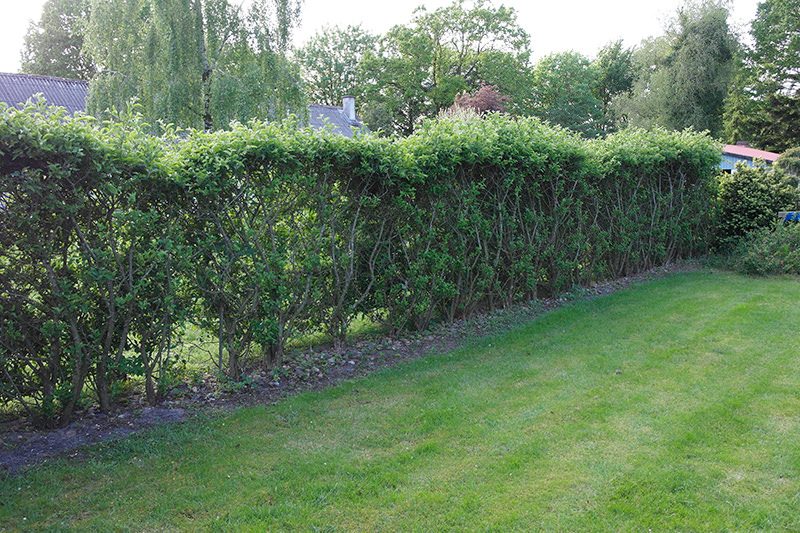
Lynsey Grosfield
Hedges are a classic fence alternative, and they needn’t be a made of cedar, beech or any other single species of non-productive plant. Hedges can be multi-species assemblages that flower, have diverse foliage, and produce fruit or nuts. The hedge pictured above, for example is made of seedling Sargeant’s crabapples (Malus sargentii), so not only does it blossom, it’s decked out in fruit in autumn. These trees could, of course, be single, stand-alone features in any garden, but they give a better economy of space and productivity clustered closely together.
Columnar Trees

Jim, the Photographer/Flickr
Columnar trees are the simplest possible sculptural addition to a garden. These trees are usually bred to grow in an upright form and are grafted onto a dwarfing rootstock, but any spur-bearing fruit tree can be maintained in this fashion. Come time to prune, all side branches should be removed, only allowing fruiting spurs to grow tightly alongside the main trunk.
Living Fences

Andrea Anastasakis/Flickr
On the same continuum of ideas is the living fence, which is basically a narrow hedge, cultivated with a little architectural sensibility. Living fences can be woven of pliable young trees, carefully shaped over a number of seasons. Trunks take the place of fence posts, and branches take the place of chain-links.
Perhaps the most well-known iteration of this technique is the Belgian fence (pictured above). Usually made with fruit trees, like apples or pears, this fence interweaves the branches of trees into a two-dimensional scaffold in a tried-and-true pattern. Tutorials for creating and managing such a fence abound on the web.
Cordons
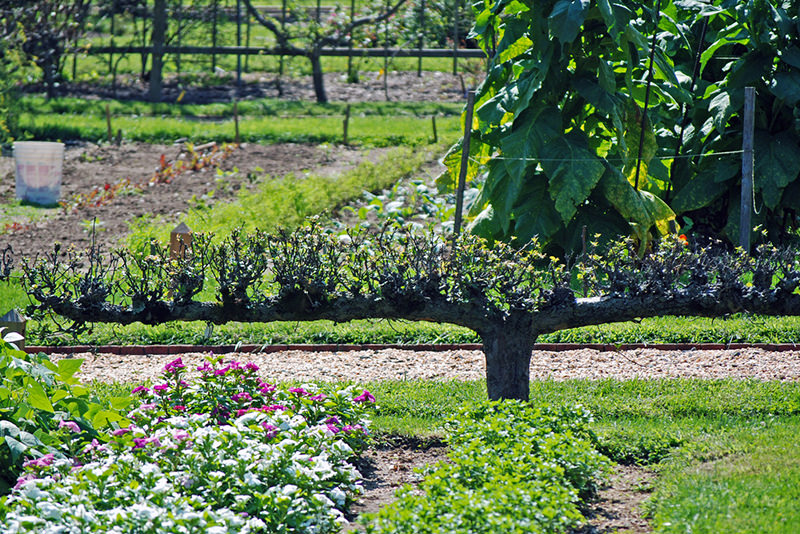
Harvey Barrison/Flickr
A cordon tree could just as easily be a columnar tree, but it is usually grown along a fence or other structure, often at a 45-degree angl. Breaking all the rules, however, is the free-form horizontal cordon pictured above. The easiest way to conceptualize a cordon is as a tilted or horizontal columnar tree.
Espalier
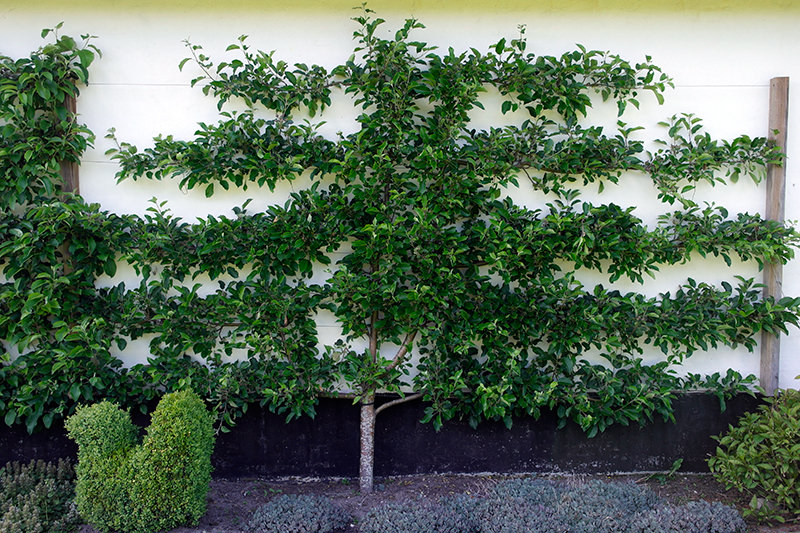
Lynsey Grosfield
Espalier is a comprehensive term for trees trained in two dimensions, but most people take it to mean a tree trained against an object with a high heat capacity. The espalier takes advantage of the warm microclimate that results from radiating heat of a wall or fence, while turning previously unproductive space into an aesthetically-pleasing banquet of fruits.
Living Garden Arches
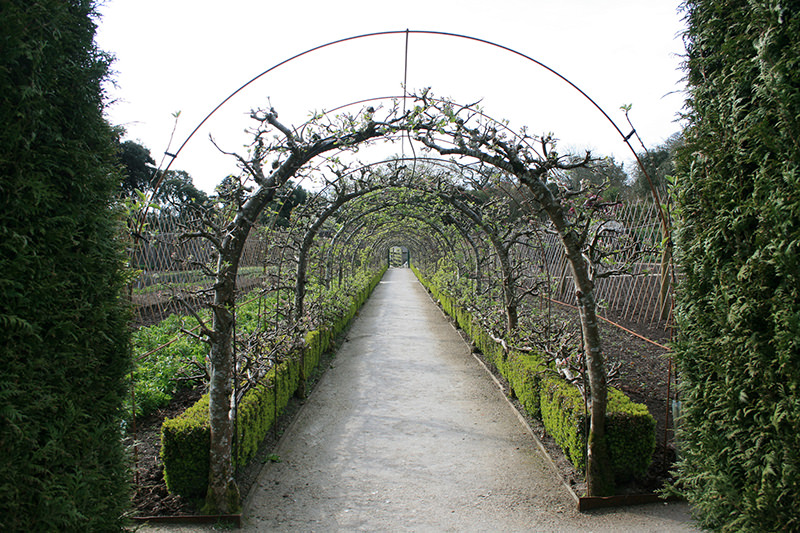
Fluffymuppet/Flickr
A living arch comprised of trained trees or vines can turn any formerly unproductive pathway into a truly edenic experience. Flowers give way to fruit that droops overhead, and the space that results as the structure becomes more established can be used for the cultivation of shade-loving plants or simply as a cozy retreat.
Trellises

Lynsey Grosfield
You can’t go wrong with a classic: Every backyard orchardist should build or invest in a solid trellis. It can host vines, as well as the aforementioned cordon trees. My grape trellis (pictured above) hosts three young vines, trained and pruned in a modified kniffen style. Once the vines fill in, the combination of the plant and structure will serve the dual purpose of providing a screen and producing a healthy crop of fruit.
Any small garden can host a mini-orchard comprised solely of sculpted trees, vines and shrubs. Far from just efficiently using vertical space, these features bring the appeal of the garden into three dimensions, create dynamic differences in views of the space from various angles, and allow for partitioning of the garden into cozy nooks.
About the Author: Lynsey Grosfield is the founder of BiodiverSeed, a global seed swap network devoted to the exchange of self-harvested, organic and heirloom seeds with the goal of preserving maximum genetic diversity. Follow BiodiverSeed on Twitter.




